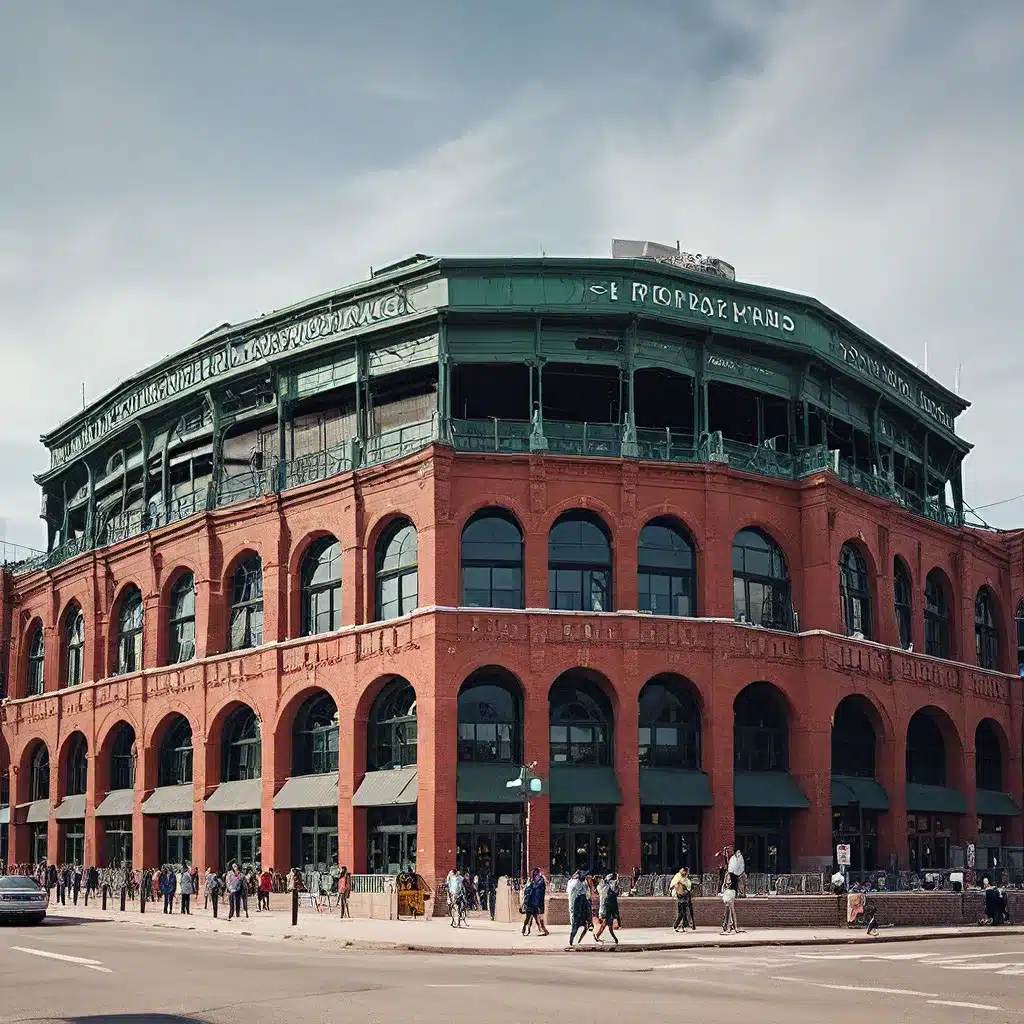
Nestled in the heart of Boston, Massachusetts, Fenway Park stands as a testament to the enduring legacy of America’s pastime. This historic ballpark, home to the beloved Boston Red Sox, has captivated sports enthusiasts and architectural aficionados alike for over a century. Fenway Park is not merely a stadium; it is a living, breathing embodiment of the rich history and unwavering passion that define the sport of baseball.
The Evolution of an Icon
Fenway Park’s story began in 1912 when the Boston Red Sox sought a new home to replace the aging Huntington Avenue Grounds. John I. Taylor, the team’s owner at the time, envisioned a state-of-the-art facility that would cement Boston’s place as a premier destination for baseball. Designed by the architectural firm of Osborn Engineering Company, Fenway Park made its grand debut on April 20, 1912, just in time for the Red Sox’ home opener against the New York Highlanders (now the New York Yankees).
From the moment it opened its doors, Fenway Park captivated the hearts and minds of baseball fans. The stadium’s distinctive features, including the iconic Green Monster left field wall, the asymmetrical field layout, and the cozy, intimate atmosphere, quickly became synonymous with the Red Sox brand. Over the decades, Fenway Park has undergone various renovations and expansions, but its core essence has remained intact, preserving the charm and character that have made it a beloved landmark.
Architectural Brilliance and Unique Features
Fenway Park’s architectural design is a remarkable blend of historical significance and modern functionality. The stadium’s red brick and stone exterior, along with its distinct arched entryways, evoke the classic aesthetic of baseball’s early years, earning it the moniker “America’s Most Beloved Ballpark.” This Jewel Box-style architecture, inspired by older stadiums like Chicago’s Comiskey Park and New York’s Polo Grounds, has become a hallmark of Fenway Park’s timeless charm.
One of the stadium’s most iconic features is the Green Monster, the 37-foot-high left field wall that has been a source of both celebration and frustration for players and fans alike. The Green Monster, initially built to prevent fans from peering into the ballpark without paying, has become a beloved part of Fenway Park’s identity, hosting a manual scoreboard and providing a unique challenge for outfielders.
Beyond the Green Monster, Fenway Park’s asymmetrical field layout is another defining characteristic. Unlike the vast majority of modern stadiums with their symmetrical outfield dimensions, Fenway Park’s field is characterized by varying distances to the outfield walls, creating an unpredictable and exciting playing environment. This design, a remnant of the stadium’s early-20th-century construction, has become an integral part of the Fenway Park experience.
Preserving the Past, Embracing the Future
Despite the passage of over a century, Fenway Park remains a vital part of the Boston community and a beloved destination for baseball enthusiasts around the world. The stadium’s owners, the Fenway Sports Group, have made a concerted effort to preserve the historic charm of the ballpark while also introducing modern amenities to enhance the fan experience.
In recent years, Fenway Park has undergone a series of renovations and upgrades, including the addition of the Right Field Roof Deck, the Dugout Suites, and the expansion of the concourse and concession areas. These improvements have been carefully designed to integrate seamlessly with the stadium’s historic architecture, ensuring that the essence of Fenway Park remains intact.
Fenway Park’s enduring appeal is not solely rooted in its physical attributes; it is also a testament to the unwavering passion and loyalty of the Red Sox fanbase. The stadium has witnessed countless moments of triumph, heartbreak, and shared experience, creating a deep emotional connection between the team, the fans, and the city of Boston. From the thunderous roar of the crowd during a crucial playoff game to the singing of the iconic “Sweet Caroline” during the eighth inning, Fenway Park has become a cultural touchstone that transcends the boundaries of sports.
Inspiring Future Generations
As Fenway Park continues to evolve, it remains a source of inspiration and a catalyst for the preservation of baseball’s rich heritage. The stadium’s architectural significance has been recognized by numerous organizations, including the National Park Service, which has designated it as a National Historic Landmark.
Beyond its sports legacy, Fenway Park has become a hub for community engagement and cultural events. The stadium has hosted concerts, college football games, and even soccer matches, demonstrating its versatility and its ability to bring people together. This commitment to fostering a sense of community has cemented Fenway Park’s status as an integral part of the Boston landscape, inspiring future generations to cherish and preserve the enduring spirit of America’s pastime.
As you plan your visit to explore historic stadiums across the country, be sure to add Fenway Park to your must-see list. Step into the hallowed grounds of this iconic ballpark, and immerse yourself in the rich history, architectural wonder, and enduring passion that make Fenway Park a true gem of the sports world.

